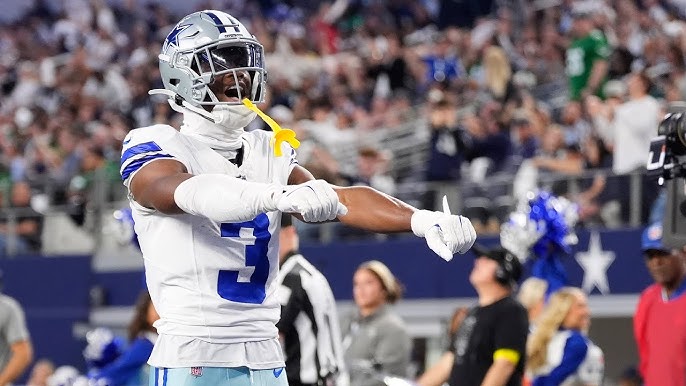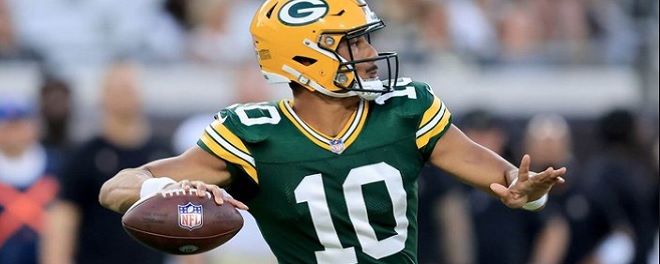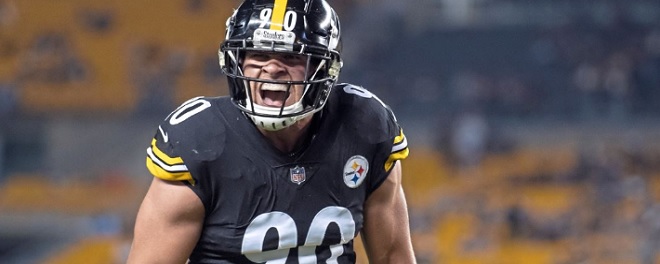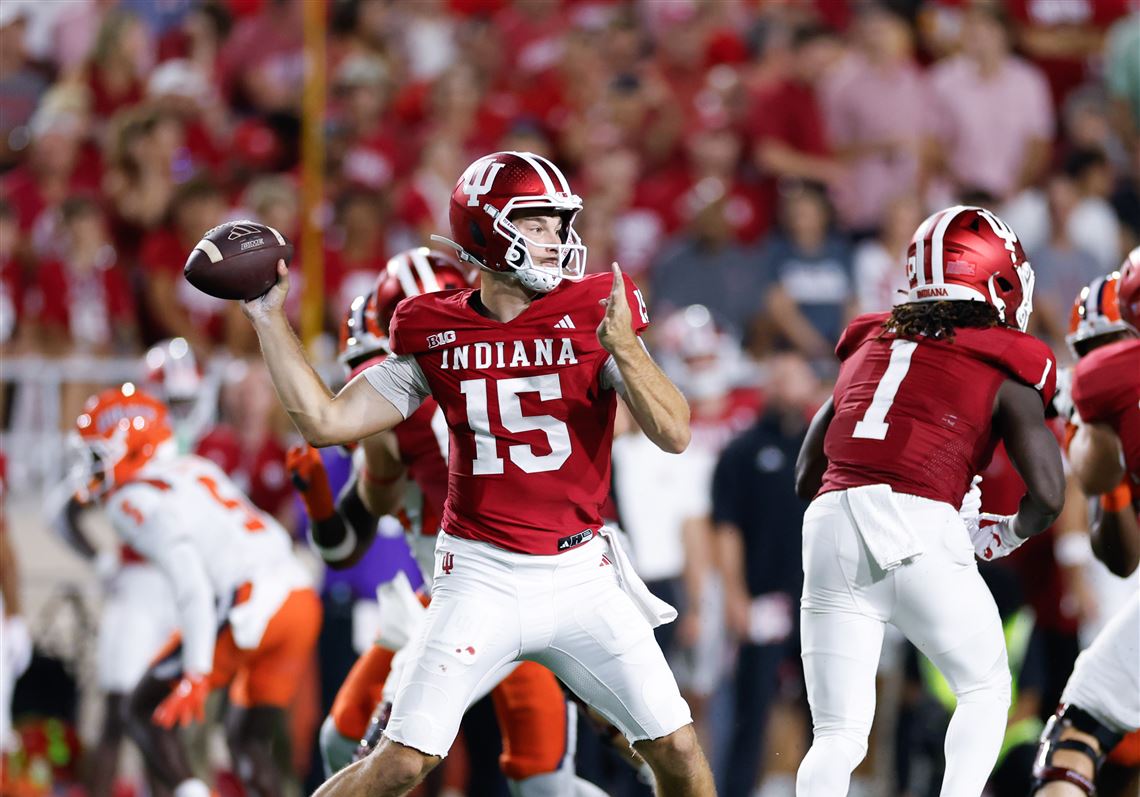Solid Starter
 Michael Pittman, WR, USC – Round 2
Michael Pittman, WR, USC – Round 2 
The Colts have needed to add more size and physicality to their receiving corps, and Pittman will inject those immediately. Last year, Indianapolis was hoping Devin Funchess would bring that element to the team, but Funchess got injured before he could make an impact. Pittman is a long-term solution and should go nicely with speedster receivers Parris Campbell and T.Y. Hilton.
Since Chris Ballard took over as general manager, the Colts have built a team that is tough, big and physical. Pittman should bring that attitude to the Indianapolis receiving corps, as he has the size and demeanor to bully defensive backs.
The 6-foot-3, 219-pound Pittman is a large receiver who is capable of being a high-volume possessional receiver. In 2019, Pittman recorded 101 receptions for 1,275 yards and 11 touchdowns to lead the Trojans. He has upside for the next level and being the son of a a really good pro, Pittman has a good understanding of the league. Pittman may not have the dynamic speed and athleticism to be a dominant No. 1 receiver, but he could be a good possessional receiver who is a valuable weapon in the red zone. Pittman looks like a pretty safe pick to develop into being a solid starter.
2019: Rock Ya-Sin, CB
2018: Braden Smith, G
2017: Quincy Wilson, CB
2016: Ryan Kelly, C
2015: Henry Anderson, DE
2014: Andrew Jackson, LB
2013: Hugh Thornton, G
Most Likely To Bust
 Julian Blackmon, S, Utah – Round 3
Julian Blackmon, S, Utah – Round 3 
There is no doubt that the Colts’ drafting has been superb under Chris Ballard and director of college scouting Morocco Brown. Over the past four drafts, it has been very difficult to select an early-rounder with real bust potential compared to past years when it was easy to see former general manager Ryan Grigson making poor decisions with draft picks. Thus, this was a hard decision to make. Of Indianapolis’ early-round picks, only Blackmon sticks out to me as having some danger of not working out.
Blackmon is a converted cornerback who was moved to free safety for his senior season, where was a solid defender for the Utes. In 2019, he totaled 60 tackles with 1.5 sacks, four interceptions and four passes defended. However at 187 pounds, Blackmon is extremely undersized for the NFL and he will need to gain a lot of weight to tackle pro running backs at the second level. He also could have problems with getting pushed around by big receivers and tight ends. Blackmon is a solid player, but I’m not sure he has the size and speed to translate to the NFL. Of the Colts’ picks on the second day of the 2020 NFL Draft, Blackmon looks like he has the most bust potential.
2019: Bobby Okereke, LB
2018: Kemoko Turay, LB
2017: Tarell Basham, DL
2016: Hassan Ridgeway, DT
2015: Clayton Geathers, S
2014: Jack Mewhort, G
2013: Khaled Holmes, C
Potential Boom Pick
 Jonathan Taylor, RB, Wisconsin – Round 2
Jonathan Taylor, RB, Wisconsin – Round 2 
The Colts traded their first-round pick of the 2020 NFL Draft for stud defensive tackle DeForest Buckner, but they still came away with a player who has the skill set to go on the opening night of the draft. Around the league, many sources thought Taylor was a legit first-rounder, but a lack of running back-needy teams and positional value pushed him lower. “He’s a first-round talent,” said an NFC director of college scouting prior to the draft, “If the runners slide like the offensive tackles and wide receivers slightly did last year, then he’ll go top of second.” The Colts benefited from that slide as they landed a feature back who could provide an instant impact for them.
There is no doubt that Taylor (5-11, 216) has the ability to be an impactful NFL running back with the skill set to be a three-down starter. He has an excellent combination of size and speed that lets him run over tacklers or by them. Taylor has a strong build and is very difficult to tackle, as he will power through tackles and bounce off defenders to continue to gain yards. He has superb contact balance and runs behind his pads with good knee bend. Taylor is a short-yardage asset as he can create on his own with the power to push the pile. He keeps his legs going after contact via a powerful lower body that is tough to stop. An added element to his power is a wicked stiff-arm that makes it tough for defenders to grab him.
In the open field, Taylor can rip off yards in chunks, and he is a threat to turn ordinary carries into big gains with his speed to get downfield. Taylor has a quick first step and a second gear that lets him can run away from defenders. Taylor isn’t Chris Johnson fast, but he has good speed for the position. With his cutting ability and quick feet, Taylor has some elusiveness in the open field as well.
Aside from his size and speed, Taylor is a natural runner with very good instincts. He has excellent vision, patience and anticipation to follow his line before bursting downhill. When holes aren’t open, Taylor is patient to let his line create a crease and uses his vision very well to make something out of nothing. Taylor anticipates where a hole is about to open, and that lets him get to the second level consistently.
In the passing game, Taylor has pretty good hands for a power back. He makes some difficult catches, and in space, he is dangerous. He should eventually be an asset in pass protection, but like all college backs, he will need coaching and development for pass blocking in the NFL.
In speaking to nine team sources, six of them said Taylor was a first-round talent, while three said they had a second-round grade on Taylor. So, the Colts landed a great value with Taylor. He could form an excellent tandem with Marlon Mack to provide Philip Rivers with a tough rushing attack. Behind the Colts’ tremendous offensive line, Taylor could be a boom pick for Indianapolis.
2019: Parris Campbell, WR
2018: Quenton Nelson, G
2017: Malik Hooker, S
2016: Le’Raven Clark, OT
2015: Philip Dorsett, WR
2014: Donte Moncrief, WR
2013: Bjoern Werner, DE
Future Depth Player
 Jacob Eason, QB, Washington – Round 4
Jacob Eason, QB, Washington – Round 4 
The Colts have two veteran quarterbacks in Philip Rivers and Jacoby Brissett, but they took Eason in the fourth round to give them another option. Rivers is nearing the end of his career, while Brissett is in the last year of his contract with Indianapolis. Thus, Eason has a great opportunity to show the Colts that he could be the long-term starter. However, if he doesn’t develop and improve, he could be limited to being a backup due to his rawness and inconsistency.
Eason has the arm, size, and pocket presence to be a starting quarterback in the NFL. Team sources say that Eason struggles to process post-snap and that can be seen in a variety of ways in 2019. He holds the ball too long as a result and must get faster at working through progressions. He has to get faster in the process of reading defenses, seeing his receivers, and getting the ball out. Eason has some other technical issues that are common with big-armed quarterbacks. There were too many throws on which Eason would fire a fastball when he needed to put more air underneath the ball with touch passes that would be easier for his receivers to catch. Eason should work on throwing a softer and more catchable ball to avoid drops and missed opportunities. While Eason is willing to use his feet, he is not as mobile as he thinks he is, and college defenders consistently chased him down. That will get exacerbated in the NFL with faster defenders. Eason has a tendency to drift backward because of his arm strength when he needs to climb the pocket. Eason made his offensive tackles’ jobs more difficult by doing that as it prevents them from funneling rushers around the pocket.
The 6-foot-6, 227-pound Eason has a cannon for an arm and can make some special throws. His developmental issues, however, could lead to him to topping out as a backup quarterback in the NFL.
2019: Khari Willis, S
2018: Nyheim Hines, RB
2017: Marlon Mack, RB
2016: Antonio Morrison, LB
2015: David Parry, DT
2014: John Ulrick, OT
2013: Montori Hughes, DT
Walt’s 2020 NFL Draft Grades:
34. Michael Pittman, WR, USC – B- Grade
The Colts wanted Tee Higgins, so they’re lucky the Bengals made a bad pick. This is a better one. Michael Pittman has tons of upside, and I think he could start across from T.Y. Hilton as a rookie. However, I think the Colts should’ve tried to trade down with so many receivers available. The value with Pittman is lacking at No. 34.
41. Jonathan Taylor, RB, Wisconsin – A+ Grade
The Colts surrendered a fifth-round pick to move up three spots, and they selected Jonathan Taylor as a result. The reason for moving up is easy to understand. They had to leap the Jaguars, who are looking to trade Leonard Fournette, in order to secure Taylor. Running back wasn’t a huge need, but Marlon Mack is just an above-average talent. Taylor is a huge upgrade, and he gives Indianapolis so much more upside.
85. Julian Blackmon, CB/S, Utah – D Grade
It’ll be interesting to see where the Colts play Julian Blackmon, assuming he can play at all. Blackmon is coming off a torn ACL and may not be 100 percent in 2020. That’s bad news, given that Indianapolis is all in to win this year with Philip Rivers. This pick doesn’t make much sense, and it happens to be a reach. The good news is that the Colts traded down 10 spots.
122. Jacob Eason, QB, Washington – B Grade
I wasn’t going to be a fan of Jacob Eason in the second round. The upside is there, but he has attitude and work ethic issues, which is just horrible for a quarterback to have. However, the fourth round makes much more sense for Eason. I wouldn’t count out Frank Reich developing Eason into a good NFL quarterback – as long as Eason wants it.
149. Danny Pinter, G, Ball State – A Grade
The Colts have a great offensive line, and they just added to it in the fifth round. Danny Pinter generated some buzz right before the draft. He’s an athletic player who could become a starter at some point.
193. Robert Windsor, DT, Penn State – B+ Grade
We’ll see if Robert Windsor can become an every-down player, but he should be an effective pass rusher on passing downs. He has some nice potential, so this is a solid selection.
211. Isaiah Rodgers, CB, UMass – B- Grade
The Colts needed cornerback help, and Isaiah Rodgers fits the range as a decent slot corner. This is a semi-decent pick.
212. Dezmon Patmon, WR, Washington State – B- Grade
Dezmon Patmon is an athletic freak, but never lived up to his potential at Washington State. Perhaps Patmon will improve if he’s coached up very well, but we’ll see if his heart is in the game. I’m fine with taking a shot on someone like Patmon at this juncture.
213. Jordan Glasgow, LB/S, Michigan – C+ Grade
Jordan Glasgow has no home on defense, as he’s a tweener. However, he was dynamic on special teams at Michigan, which is why the Colts chose him at the end of the sixth round. I’m OK with taking special teams-only players this late. It’s not exciting, but Glasgow can contribute on fourth down.
2020 NFL Draft Team Grade: B . Follow Walter @walterfootball for updates.
Indianapolis Colts Season Preview
2026 NFL Mock Draft - Jan. 7
NFL Picks - Jan. 7
NFL Power Rankings - Jan. 5
Fantasy Football Rankings - Sept. 1




